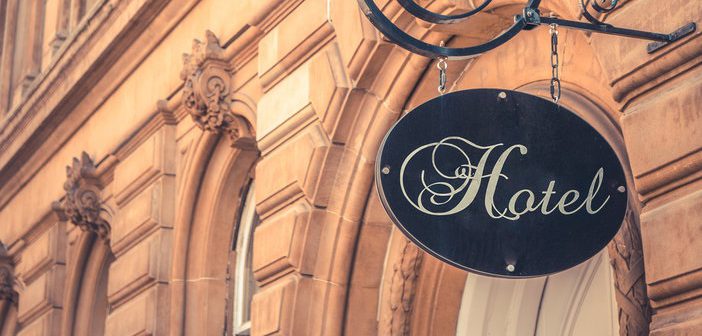by Alicia Hoisington
Although boutique and lifestyle hotels aren’t new, they have grown in popularity over the past few years. As the wants and needs of travelers evolve, so too must product offerings – and almost every major brand company has followed suit by introducing its own lifestyle brand.
But, what’s less clear: What exactly is a boutique or lifestyle hotel? The terms are often used interchangeably in the industry. To know why these products have become so popular, it’s important to first know what they are.
Court Williams, CEO at HVS Executive Search, says boutique and lifestyle hotels overlap but are not synonymous. A boutique hotel can be any type of hotel, usually small, that isn’t necessarily “hip or trendy,” he says. But, a lifestyle hotel offers something more.
“Lifestyle hotels are really all about the sensory experience from the time you walk in, from the music, to the design, to the food and beverage,” Williams says, adding that the F&B experience is a critical element of a lifestyle hotel.
Todd Wynne-Parry, executive vice president of global acquisitions and developments at Two Roads Hospitality, says he’s been answering the definition question for more than 20 years.
“Boutique hotels are smaller and don’t follow much of a construct except that they are part of the fabric of their neighborhood,” he says. “Lifestyle is different and tends to be a notch above in terms of caliber – maybe a 4 or 4.5-star hotel.”
He agrees that the F&B experience in a lifestyle hotel needs to be strong, but it also should be geared toward the property’s community. That is, it needs to be designed for the locals first and foremost, have its own identity and stand alone from the hotel that houses it.
Lawrence Kestin, managing principal of Glenmont Capital Management, agrees that in comparison to boutique hotels, lifestyle hotels are taken to the next level. While he says boutique hotels are typically unbranded properties, lifestyle hotels can be boutiques with the benefit of a large brand behind them.
“A lifestyle hotel combines living elements and activities and functional design. It’s less focused on guest rooms and more so on public space,” he says. That public space includes areas such as the lobby, hotel bar, rooftop F&B outlets, lounges and libraries, to name a few.
“Lifestyle hotels encourage guests to connect in a variety of outlets, with high tech and a highly personalized service offering,” Kestin says.
Whatever the definition, almost every hotel company is in on the lifestyle business. From Marriott’s Moxy to IHG’s Hotel Indigo, major brand companies have jumped into the space, enticing guests and owners alike.
What to like about lifestyle
Kestin and the Glenmont team saw opportunity in the boutique/lifestyle space when they decided to convert a Holiday Inn Express in Detroit into a Hotel Indigo, which is expected to be completed within the next year.
When it came time to reposition the hotel, the team weighed the cost of bringing the hotel up to the Holiday Inn Express brand standard or transforming it into an upscale branded boutique and found little cost disparity between the two options. Hotel Indigo was selected because there would be no rate ceiling, compared to the Holiday Inn Express brand. The Indigo brand can compete with higher-end hotels in a way Holiday Inn Express can’t, Kestin says.
“It’s all about rate. From an expense standpoint, there isn’t much difference – maybe a little bit more for the service we’ll provide,” he says. “But it’s all about driving revenues and bringing more people in through the door.”
Kestin says that another major determining factor for the decision to rebrand had a lot to do with the profile of today’s guest.
“People want to go to a hotel that has a vibe associated with it,” he says. “People want to interact with one another, and they gravitate toward that. They are more inclined toward choosing a smaller and more intimate hotel in an effort to avoid the big-box experience.”
The new Hotel Indigo in Detroit will be an upgraded product with more character, Kestin says. A restaurant will also be added, as well as a bar area that encourages guests and locals to gather.
“We’re trying to bring the community into the hotel; that’s part of what Indigo is designed to do, with some common thread reflecting the neighborhood in which the hotel is located,” he says.
And while lifestyle properties tend to draw inspiration from their local communities, Williams says that at the end of the day the hotels are designed to keep guests on-site. The longer those guests are in the hotel, the better the chances they will spend more on-property.
“That’s why you invest in F&B, so that they aren’t leaving your hotel to go spend money elsewhere,” he says. “It’s about enjoying the overall experiences from the amenities, whether it’s the spa, F&B, or the pool area.”
He says there is greater opportunity for lifestyle hotel owners to drive the bottom line than from a hotel that only offers breakfast, for example.
“You’re capturing the guest who’s there but also non-hotel guests. That’s one of the reasons owners will invest. Lifestyle hotels might be costly to put together, but the revenue stream compensates for that,” Williams says.
Wynne-Parry agrees that increased revenue opportunities are one reason the lifestyle space has taken off. (For its part, Two Roads has 90 hotels in its portfolio and boasts five lifestyle and resort brands, including Joie de Vivre, Thompson, Tommie, Destination and Alila.)
He points to 2017’s robust supply and demand growth – which was up 1.8 percent and 2.7 percent, respectively, for the year, according to data and analytics specialist STR – as a credit to the lifestyle boom. While Wynne-Parry says all hotels in the U.S. saw revenue per available room grow two percent for the year, independent hotels and resorts grew RevPAR more than four percent.
“[Hoteliers] saw the growing demand and that people are willing to pay more,” he says.
With anything that grows too quickly, concern arises about bubbles bursting. But, that doesn’t seem to be a fear for the lifestyle space, as sources say the trend is here to stay.
“New generations are always going to want something different from previous generations, so the product could shift,” he says, adding that he doesn’t think the idea of buying an experience over a bed is one that will be fleeting anytime soon.
Kestin agrees. “People have become more individualized and more social as a result,” he says.
“The day of the big-box brand is behind us to a large degree. While those hotels are good for group functions and will always capture a share of the market, today’s traveler is more about unique and individualized hotel experiences, and that’s not going to change,” he adds.
STR data
STR, a data and analytics specialist, defines boutique hotels as those properties that appeal to guests because of their atypical amenity and room configurations. While STR says boutiques are normally independent with fewer than 200 rooms, it does define some chains as falling within the boutique space, including but not limited to: Autograph Collection, Dream Hotel, Joie De Vivre, Kimpton Hotels and W Hotels. Boutique hotels also typically have a high average rate and offer high levels of service. They provide authentic cultural and historic experiences as well as interesting guest services, according to the data company.
As of year-to-date March 2018, STR’s U.S. database shows:
- 1,068 hotels with 128,279 rooms
- 70.6 percent occupancy (+1.5 percent)
- $217.28 ADR (+1.1 percent)
- $153.30 RevPAR (+2.6 percent)
- 5.3 percent increase in supply (11.5 million room nights)
- 7 percent increase in demand (8.1 million room nights)




